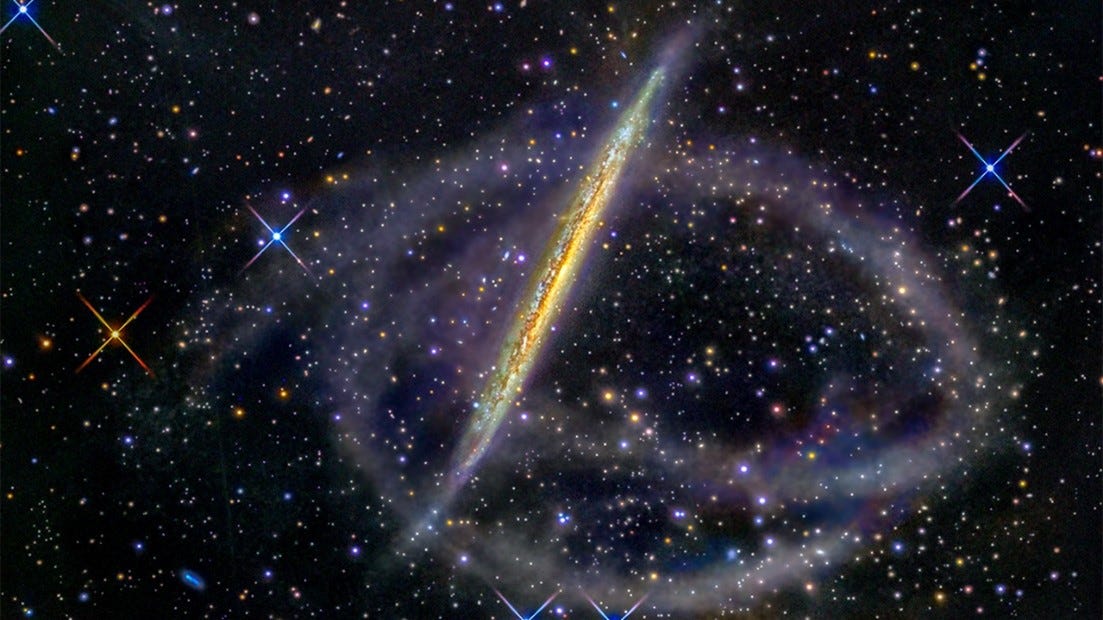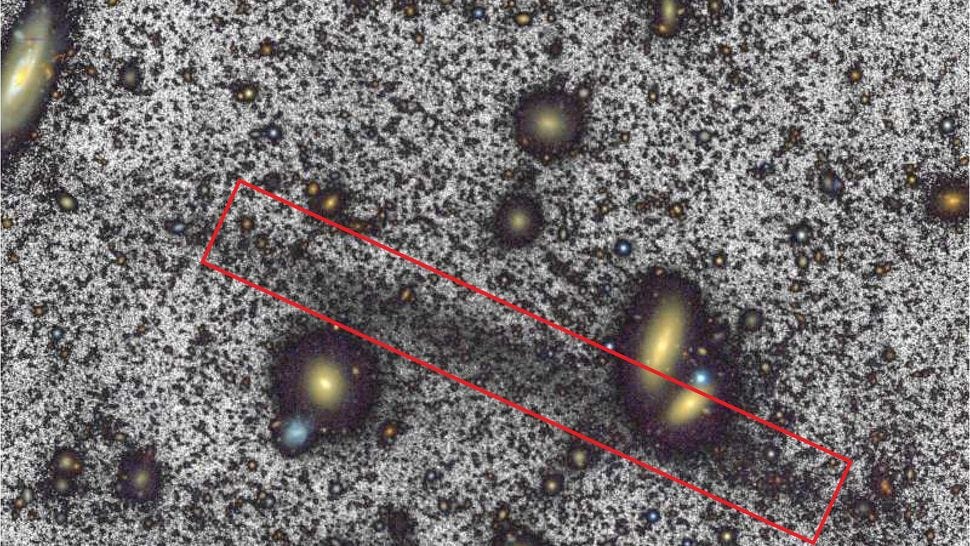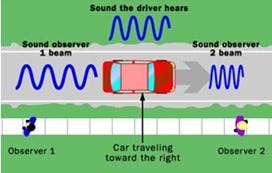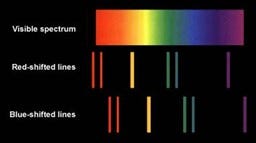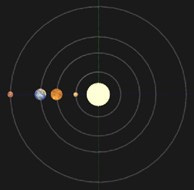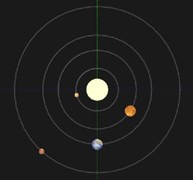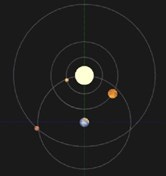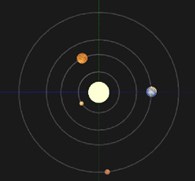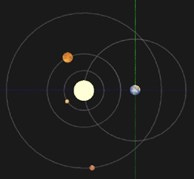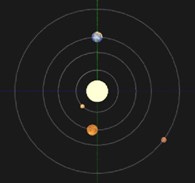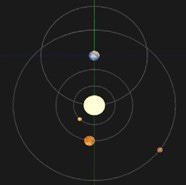Heliocentricity and Theoretical Proofs (part six). Star streaming, the Doppler effect and the geometric complexity of geocentrism objection.
The claims of these 'proving' Heliocentricity do not hold up to scrutiny.
Prologue
Previous posts have looked at the paucity of real evidence for heliocentricity. Remarkably these failures in experimentation or evidence, are always turned into ‘proofs’ by ‘The Science’. Other models which can explain the same phenomena are dismissed out of hand due to the philosophical-world or universe-view that heliocentricity ‘must be right’. The reality is that there is not a single mechanical proof to support Copernicanism. This post will look at 3 standard text-book proffered ‘proofs’ for heliocentricity, namely, star streaming, the Doppler effect and geocentric (and Tychonic) geometrical complexity.
The standard textbook list of ‘proofs’ for heliocentricity usually include this list:
1. Newton’s theory of gravitational attraction
2. The Stellar Parallax
3. Stellar aberration of the Sun
4. The Foucault Pendulum
5. The bulge at the Equator
6. Geosynchronous satellites
7. Space probe measurements
8. Retrograde motion
9. Star-streaming (this post)
10. The Doppler effect (this post)
11. Geometric complexity of geocentrism (this post)
#9 Star-streaming
Star-streaming is the optical phenomenon occurring when stars seem either to spread apart from each other or come closer together. Streaming can include a clustering of stars, or the ‘shredding’ of stars within an area of a galaxy. Astronomers have been uncovering the stellar remains of ripped clusters and galaxies, since the first streams were discovered in the Sloan Digital Sky Survey (another interesting future topic which also upends Copernican theory). Recently a star stream supposedly 10 times longer than the milky way, was discovered and named the ‘Giant Coma stream’.
(CGI representation of streaming stars)
The concept of star-streaming is due at least in part to an optical illusion. If you ride in a car that is moving parallel to a forest, you will notice as you move past, that some trees seem to spread out from each other, whilst others converge. This is due to the relative motion between you ‘the observer’ and the trees as objects. The effect is only optical, not real.
The first astronomer to notice this effect in the heavens was William Herschel who in 1783, discovered that the Sun appears to move through the stars. He isolated thirteen such stars and found that as the Sun moved through them, they were spreading apart from a point in the constellation Hercules. He then isolated thirty-six stars and found similar results. Friedrich Argelander, an assistant to Friedrich Bessel, found similar results with 390 stars in 1830. In 1842 Otto Struve confirmed the results. The Doppler effect is real and has been verified since 1842.
As in the case of parallax discovered in 1838, these star-streaming results were invariably touted as proof of the heliocentric system. Star-streaming, however, provides no proof of anything. The reason is simple. The optical illusion of the separation of the stars can be caused either by the Earth moving past the stars or the stars moving past a fixed Earth. Both will produce the same phenomenon of star-streaming. This is akin to the example above, with a car moving past the forest analogy and the observer’s optical impression of clustering and separating trees.
If we look at the ‘Giant Coma stream’, which is an intergalactic cluster of stars, the identification of star-streaming has no relationship to heliocentricity. No one knows why stars cluster or are torn apart, or are randomly clustered, with most in science ascribing the destruction or attraction to larger galaxies acting on smaller.
(The intergalactic stellar stream (highlighted) was spotted in galaxy cluster 231 million light-years from Earth. (Image credit: William Herschel Telescope/Román et al.)
The Giant Coma stream, however, is apparently a very fragile structure, composed of mutually attracting and repelling galaxies. Modern science would expect such a constellation to be torn apart by a larger galaxy, but this has not occurred. Observing such a phenomenon stretching across galaxies does not prove that your platform (the Earth) is moving. It simply means you are observing a phenomenon that modern science cannot explain and that your platform might well be immobile and the star stream, pace Mach and Einstein, in relative motion.
#10 The Doppler Effect
The Doppler Effect (or Doppler Shift) was discovered by Christian Doppler in 1842. This effect occurs when the source of wave emission moves closer or farther away from the observer. The waves are compressed when the source moves closer and stretched when the source moves farther away. This phenomenon does not occur, however, when the receiver moves closer or farther away from a stationary source since the waves coming to the receiver are the same in both cases.
Light acts in a similar manner. If the source of light is moving closer to the observer, the light waves are compressed or ‘blue-shifted’; while if the source of light is moving farther away from the observer, the light waves are stretched or ‘red-shifted’.
The first blue-shifted or red-shifted stars observed were Aldebaran, Arcturus and Betelgeuse in 1894 by J. E. Keeler. They would produce a spectrum like that in the below graph (Keeler,1894)
Heliocentrists have claimed that since the Earth revolves around the sun at about 19 miles per second, this movement causes the Doppler shift of stars. As one author states:
‘Classical physics, but not Special Relativity, predicts different Doppler shifts for the source moving versus the observer moving, allowing one to ‘determine’ whether the earth moves or a ‘fixed star’ moves….To conclude, Mach did not consider the difference between the Copernican and Ptolemaic/Brahean systems and the observations falsifying the latter’. (Hartman and Nissim-Sabat, p. 1167)
The above is standard fare in most textbooks. The truth is, however, that the neo-Tychonic geocentric system can easily explain a Doppler shift. The neo-Tychonic system has the star field rotating around the Earth on a 1 Astronomical Unit or 8.3 light years radial hub (toward the Earth). In this model, this means that on one hemisphere of the star field, the stars will be receding away from the Earth (red-shifting) and on the opposite hemisphere the stars will be advancing toward the Earth (blue-shifting).
(Tychonic model and Doppler effects, Earth with its moon satellite at the centre)
In the Tychonic model, the stars are aligned with the Sun, and the Sun revolves around the Earth on a 1 AU radial pivot. This radial movement toward the Earth will generate the Doppler effect. As with light aberration, blue or red-shifting light spectrums only indicate relative movement. They do not confirm that the Earth is mobile around the Sun.
The explanation above is perfectly consistent with modern science postulates and geometrical equivalency. It should be noted that there are many problems with the Redshift theory of the expanding universe as devised by Hubble and others (posts in this substack explain some of these issues). Redshifting does not support heliocentricity and if Redshifting was true, the sky would be dark as expanding and accelerating galaxies, moving at unfathomable speeds, sped away from the Earth. There are also mathematical theorems which undermine the validity of Doppler and Relativistic postulates as well, which cannot be answered by ‘The Science’.
#11 Geocentrism is too complicated
A somewhat common objection to geocentrism, or the Tychonic geo-helio-centrism, is that if it were true, the whole geometry of the solar system would be completely dislocated and twisted. Planets would be revolving in different orbits and nothing would look the same in the night sky. It is further alleged that space probes and interplanetary satellites would never be able to get to their charted destination. Some of the more hysterical even believe that planets and asteroids would crash into each other.
None of these objections have merit. The geocentric and the heliocentric systems share the same distances, geometry and speeds. The only difference is what occupies the center. In the Copernican system the Sun is in the center while the Earth and the planets move around it. The Tychonic system is very similar, except that it puts the Earth in the center instead of the Sun, but still has the planets revolving around Sun while the Sun is revolving around the Earth. This means that the geometry, distances and speeds are identical between the Copernican and Tychonic systems which can be seen in the graphics below.
Start with the Sun in the center. The planets: Mercury, Venus, Earth and Mars are revolving counterclockwise.
Comparison 1: In the heliocentric system given in the top image, the Sun is in the centre of the crosshairs and the planets are at the 9:00 o’clock position. In the geocentric system on the bottom, the Earth is in the centre of the crosshairs. Notice that all the distances and geometry are the same. The only difference is that the centre has changed.
Comparison 2: For the heliocentric system on the top, the Earth has completed one‐fourth of its orbit. For the geocentric system on the bottom, the Sun, carrying the planets, has completed one‐fourth of its orbit. All the distances and positions of the planets are precisely the same in each system.
Comparison 3: In the heliocentric system on the top, the Earth has completed half its orbit. In the geocentric system on the bottom, the Sun has completed half its orbit. The geometry is the same.
Comparison 4: Both systems have completed a ¾ orbit. All distances and positions remain the same.
There is no difference in the geometrical complexity between the neo-Tychonic and the Copernican models. This claim cannot be accepted as proof of heliocentricity.
Bottom Line
We have looked at 3 standard proofs for Copernicanism, namely, star-streaming, the Doppler effect and geocentric complexity. Using common sense and some basic modelling, we can see that none of these stand up to scrutiny as proof for heliocentricity. Star-streaming has absolutely nothing to do with the Earth’s mobility around the Sun. The Doppler effect can be explained by other models including the Tychonic, and Redshifting or the ‘Doppler effect’, is itself a major problem for the Big Bang as other posts here have outlined. The geometrical complexity of the neo-Tychonic system is the same as that for heliocentricity. Thus, these 3 propositions are very weak and cannot be used as evidence for Copernicanism.
We have now 6 different posts comprising some 20.000 words which have traversed through the 11 iconic ‘proofs’ of heliocentricity. Even if you are sympathetic to Copernicanism, the proofs are simply underwhelming and do not substantiate the claims by ‘The Science’ that heliocentricity is proven, done, and dusted. In fact, looking through the details of these claims, in most areas the neo-Tychonic model better explains the observed phenomena.
This is especially true when we consider the Coriolis effect, the Euler and centrifugal forces. Ironically, the Machian and Einsteinian theorems do more to support geo-helio-centrism model, than they do the Copernican. Also quite remarkably, even space probes, images and stellar observations, cannot detect the Earth’s mobility around the Sun, nor its supposed diurnal rotation.
Does that mean that the Tychonic model is ‘better’ than the Copernican? Objective evidence does indeed suggest just that. However, no one really knows and no one is omniscient enough, to make any claim to a singular truth about the structure of the universe, or how planetary motions operate. What can be said is that when we go looking for evidence of Copernican claims, the offered proofs are simply underwhelming. This is true in most areas that are accepted as ‘The Science’.
===
Sources
Hartman Herbert I. and Nissim-Sabat, Charles. “On Mach’s critique of Newton and Copernicus,” American Journal of Physics 71(11), November 2003
Keeler, J. E. Publications of the Lick Observatory, 3:195, 1894
Doppler, C. (1842). Über das farbige Licht der Doppelsterne und einiger anderer Gestirne des Himmels (About the coloured light of the binary stars and some other stars of the heavens). Prague: 1842 (Reissued 1903).
Andrade, E. "Doppler and the Doppler effect", Endeavour Vol. XVIII No. 69, January 1959 (published by ICI London). Historical account of Doppler's original paper and subsequent developments.
Nolte David. The fall and rise of the Doppler effect. Physics Today, v. 73, pgs. 31 – 35, 2020
Related Posts
Heliocentricity and Theoretical proofs (part three). Stellar parallax and light aberration.
Heliocentricity and Theoretical proofs (part two). Universal forces ignored by Heliocentricity
Heliocentricity and Theoretical proofs (part one). Newtonian gravitation
Heliocentricty and Scientism (part 3). Georges Sagnac and the ‘Sagnac effect’
Heliocentricity and Scientism (part 2)



